Physics - Optics: Lensmaker's Equation (1 of 5)
TLDRIn this educational video, the presenter delves into the intricacies of optics, focusing on the lens maker's equation. The equation is introduced as a means to calculate the focal length of a lens, considering the refractive indices of the lens material and the surrounding medium, as well as the radii of curvature of the lens surfaces. Through an example with a lens made of glass in air, the presenter demonstrates the calculation process, resulting in a converging lens with a focal length of 20 centimeters. The video promises further exploration of different lens shapes and their focal lengths, catering to viewers interested in the principles of lens optics.
Takeaways
- 📚 The session focuses on optics, specifically the lens maker's equation.
- 🔍 The lens maker's equation is given as \( \frac{1}{f} = (n-1) \left( \frac{1}{R_1} - \frac{1}{R_2} \right) \), where \( f \) is the focal length, \( n \) is the refractive index of the lens, and \( R_1 \) and \( R_2 \) are the radii of curvature of the lens surfaces.
- 🌐 The refractive index of air is assumed to be 1, which is a standard reference for the lens medium.
- 💧 If the lens is in a different medium, such as water, the refractive index of that medium is used in the equation.
- 🔄 The sign of the radius of curvature is positive if the curvature is away from the observer and negative if it bulges towards the observer.
- ∞ A flat surface on the lens has a radius of curvature equal to infinity.
- 🔢 The goal is to find the focal length of a lens using the lens maker's equation with given values for refractive indices and radii of curvature.
- 🔄 The example provided uses a lens with a refractive index of 1.5 for the glass and 1 for the air, with \( R_1 \) being positive 20 cm and \( R_2 \) being negative 20 cm.
- 📉 The calculation simplifies to finding \( \frac{1}{f} \), which is then used to determine the focal length \( f \).
- 🎯 The result of the example calculation is a focal length of 20 cm, indicating a converging lens.
- 🔍 The focal length is the same as the radius of curvature for both sides of the lens in this example, which is a characteristic of a converging lens.
Q & A
What is the lens maker's equation?
-The lens maker's equation is 1/f = (n - 1) * (1/R1 - 1/R2), where f is the focal length, n is the index of refraction of the lens, R1 is the radius of curvature of the front of the lens, and R2 is the radius of curvature of the back of the lens.
What is the index of refraction for air?
-The index of refraction for air is 1.
How is the radius of curvature defined when it curves away from the observer?
-If the radius of curvature curves away from the observer or towards the left, it is considered positive.
What is the radius of curvature when the surface is flat?
-When the surface is flat, the radius of curvature is equal to infinity.
What is the index of refraction of the glass used in the example?
-The index of refraction of the glass used in the example is 1.5.
How do you determine the sign of the radius of curvature for the front and back sides of the lens?
-The radius of curvature is positive if it curves away from the observer (front side) and negative if it bulges towards the observer (back side).
What are the given radii of curvature for the front and back sides of the lens in the example?
-The radius of curvature for the front side of the lens is +20 cm, and for the back side of the lens, it is -20 cm.
How do you calculate the focal length using the lens maker's equation in the given example?
-You use the equation 1/f = (n - 1) * (1/R1 - 1/R2). With n = 1.5, R1 = 20 cm, and R2 = -20 cm, it simplifies to 1/f = 0.5 * (1/20 + 1/20), which results in 1/f = 0.5 * (1/10) = 0.5/10. Therefore, f = 20 cm.
What does a positive focal length indicate about a lens?
-A positive focal length indicates that the lens is a converging lens.
Why is the focal length also in centimeters in the final result?
-The focal length is in centimeters because the radii of curvature were given in centimeters.
What type of lens is described in the example, and why?
-The lens described in the example is a converging lens because it has a positive focal length.
Outlines
🌟 Introduction to the Lens Maker's Equation
This paragraph introduces the topic of optics, specifically focusing on the lens maker's equation. The equation is presented as a formula that relates the focal length of a lens to its refractive properties and the radii of curvature of its surfaces. The importance of the index of refraction for both the lens material and the surrounding medium is discussed, with the assumption that the lens is initially in air. The concept of positive and negative radii of curvature is explained, with examples of how these relate to the physical shape of the lens surfaces. The goal is set to find the focal length of a lens using the lens maker's equation, and an example is promised for further illustration.
Mindmap
Keywords
💡Optics
💡Lens Makers Equation
💡Focal Length
💡Index of Refraction
💡Medium
💡Radius of Curvature
💡Positive Radius of Curvature
💡Negative Radius of Curvature
💡Converging Lens
💡Diverging Lens
💡Center of Curvature
Highlights
Introduction to the lens maker's equation, a fundamental concept in optics.
Explanation of the lens maker's equation formula and its components.
Clarification on the assumption of the lens being in air with an index of refraction of 1.
Discussion on the change in the equation when the lens is placed in water.
Importance of the radius of curvature in determining the lens properties.
Significance of the observer's position relative to the lens and its impact on the sign of the radius of curvature.
Differentiation between positive and negative radius of curvature based on the lens shape.
Condition for a flat surface in a lens, indicated by an infinite radius of curvature.
Objective of finding the focal length of a lens using the lens maker's equation.
Use of the lens maker's equation to calculate the focal length with given values.
Given values for the index of refraction of the glass and air in the calculation.
Determination of the sign and value of the radius of curvature for the front and back of the lens.
Simplification of the lens maker's equation to find the focal length.
Calculation of the focal length resulting in a positive value indicating a converging lens.
Observation that the focal length equals the radius of curvature of both sides of the lens.
Identification of the lens as a converging lens due to its positive focal length.
Promise of more examples to understand the focal length of different shaped lenses.
Transcripts
Browse More Related Video
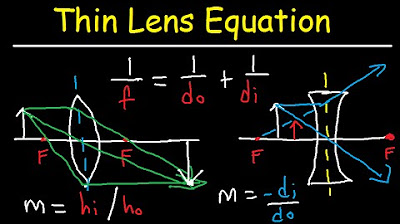
Thin Lens Equation Converging and Dverging Lens Ray Diagram & Sign Conventions
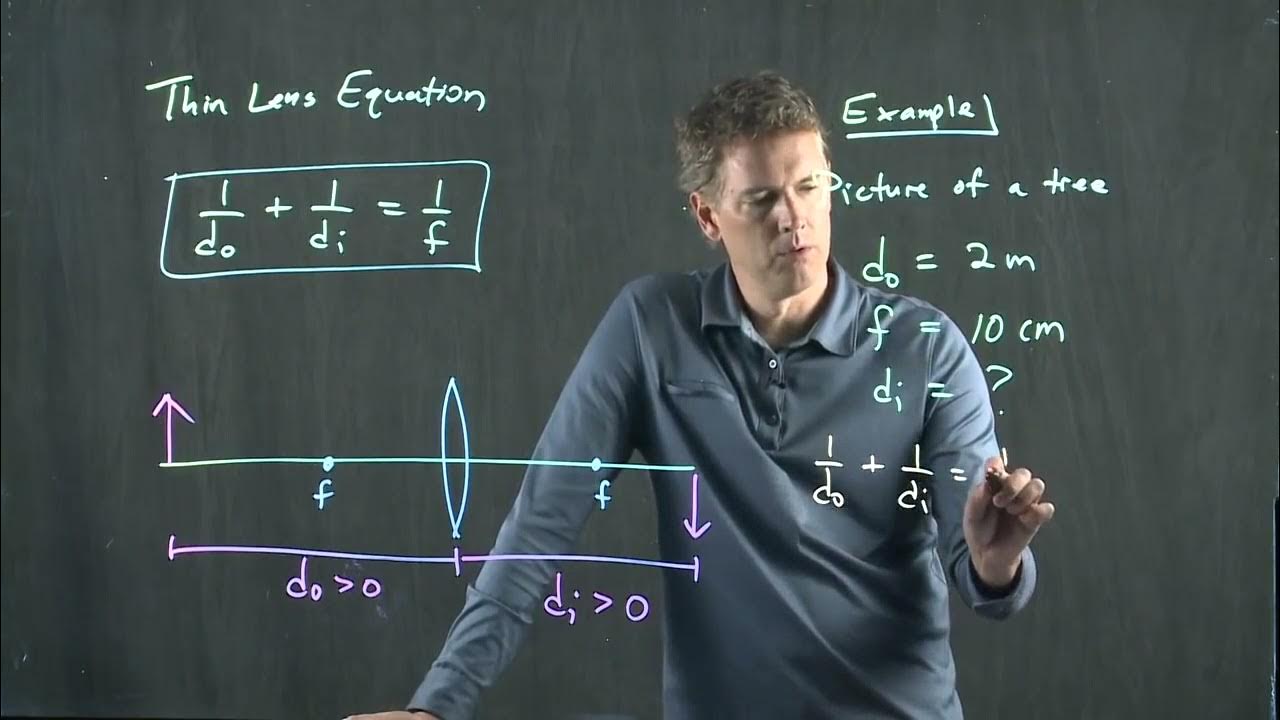
Picture of a Tree - Thin Lens Equation | Physics with Professor Matt Anderson | M27-18
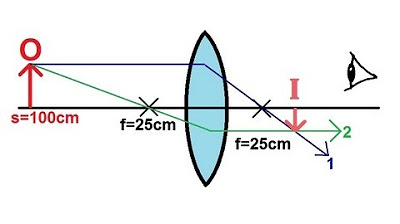
Physics - Optics: Lenses (1 of 4) Converging Lens
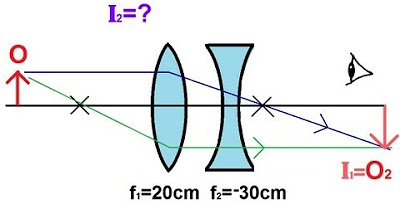
Physics - Optics: Lenses (3 of 5) Lens Combinations - Converging & Diverging Lenses
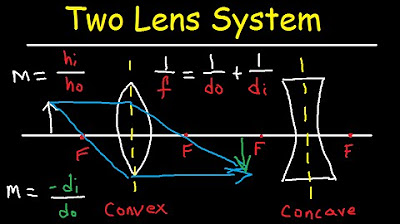
Multiple Two Lens System with Diverging and Converging Lens
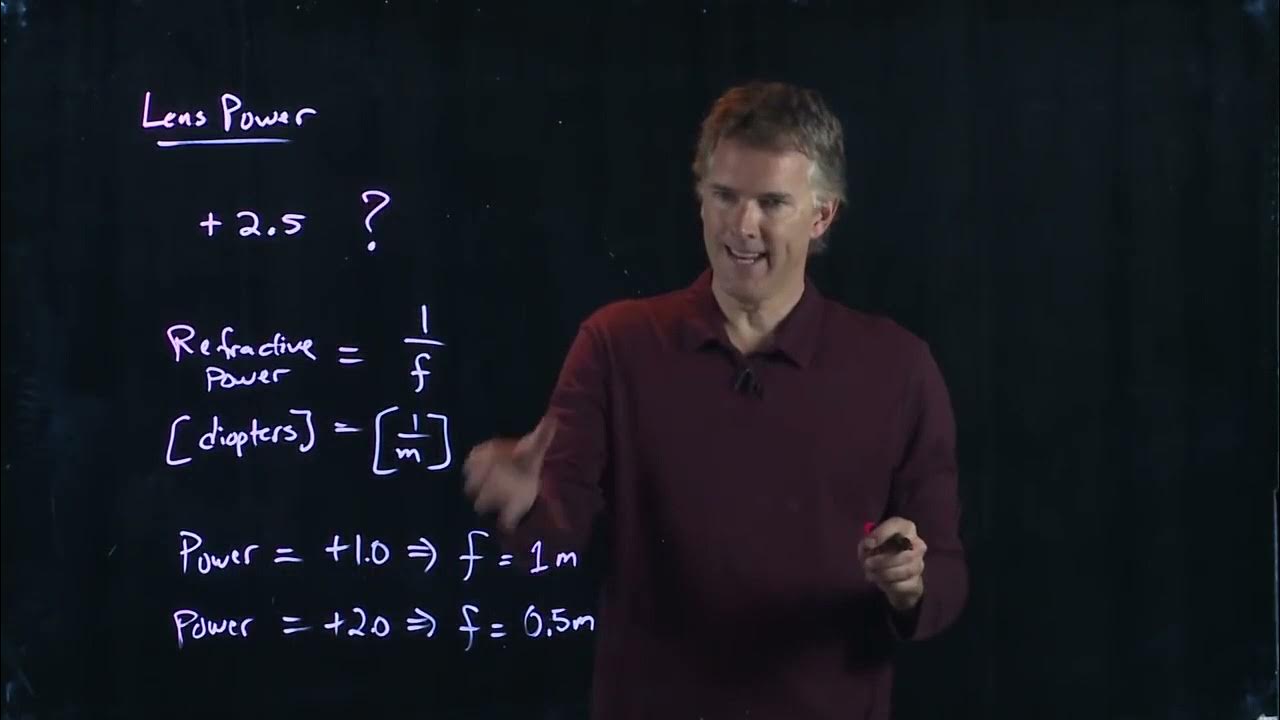
Wearing Glasses - What's the Power? | Physics with Professor Matt Anderson | M28-03
5.0 / 5 (0 votes)
Thanks for rating: